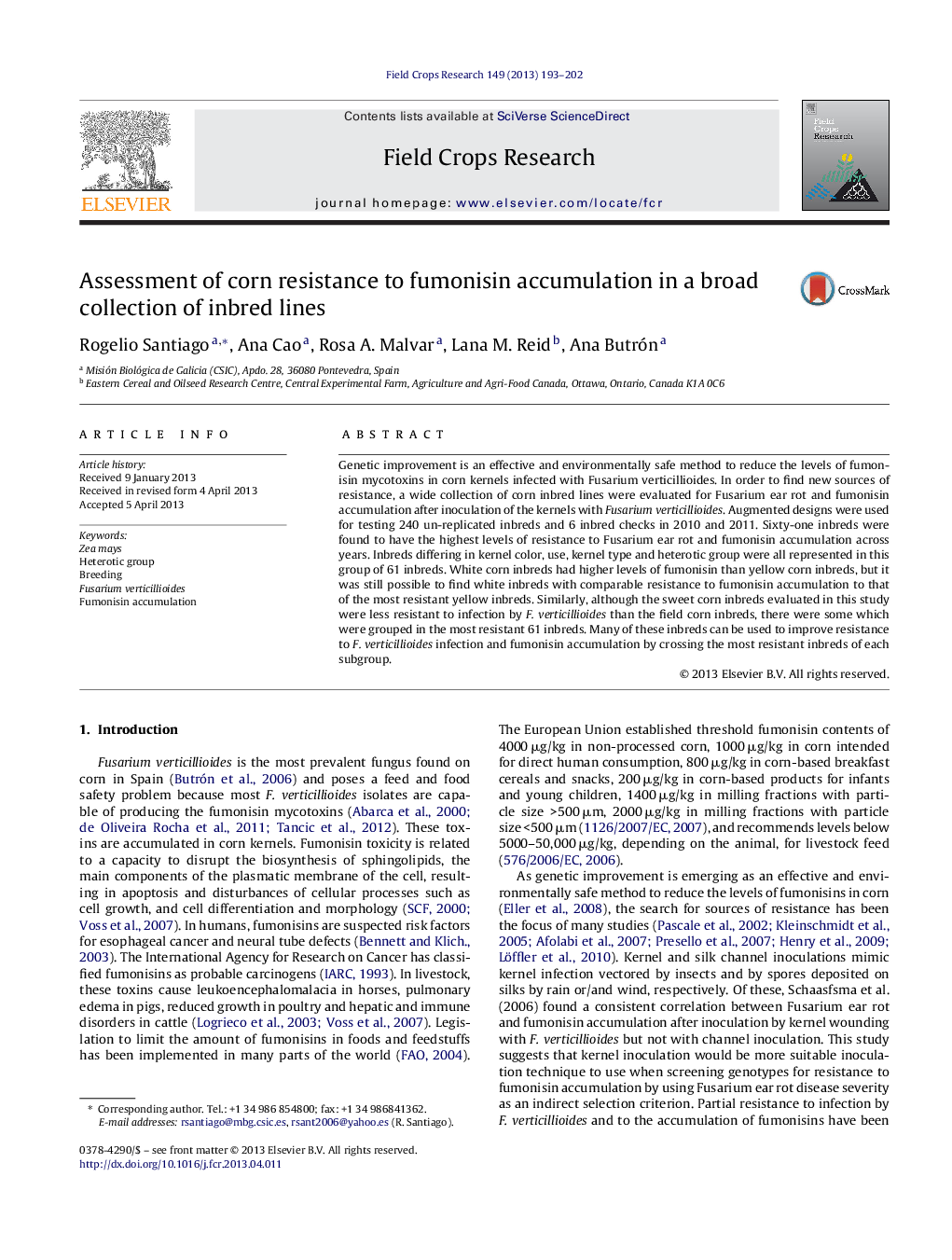| Article ID | Journal | Published Year | Pages | File Type |
|---|---|---|---|---|
| 6375264 | Field Crops Research | 2013 | 10 Pages |
Abstract
Genetic improvement is an effective and environmentally safe method to reduce the levels of fumonisin mycotoxins in corn kernels infected with Fusarium verticillioides. In order to find new sources of resistance, a wide collection of corn inbred lines were evaluated for Fusarium ear rot and fumonisin accumulation after inoculation of the kernels with Fusarium verticillioides. Augmented designs were used for testing 240 un-replicated inbreds and 6 inbred checks in 2010 and 2011. Sixty-one inbreds were found to have the highest levels of resistance to Fusarium ear rot and fumonisin accumulation across years. Inbreds differing in kernel color, use, kernel type and heterotic group were all represented in this group of 61 inbreds. White corn inbreds had higher levels of fumonisin than yellow corn inbreds, but it was still possible to find white inbreds with comparable resistance to fumonisin accumulation to that of the most resistant yellow inbreds. Similarly, although the sweet corn inbreds evaluated in this study were less resistant to infection by F. verticillioides than the field corn inbreds, there were some which were grouped in the most resistant 61 inbreds. Many of these inbreds can be used to improve resistance to F. verticillioides infection and fumonisin accumulation by crossing the most resistant inbreds of each subgroup.
Related Topics
Life Sciences
Agricultural and Biological Sciences
Agronomy and Crop Science
Authors
Rogelio Santiago, Ana Cao, Rosa A. Malvar, Lana M. Reid, Ana Butrón,
